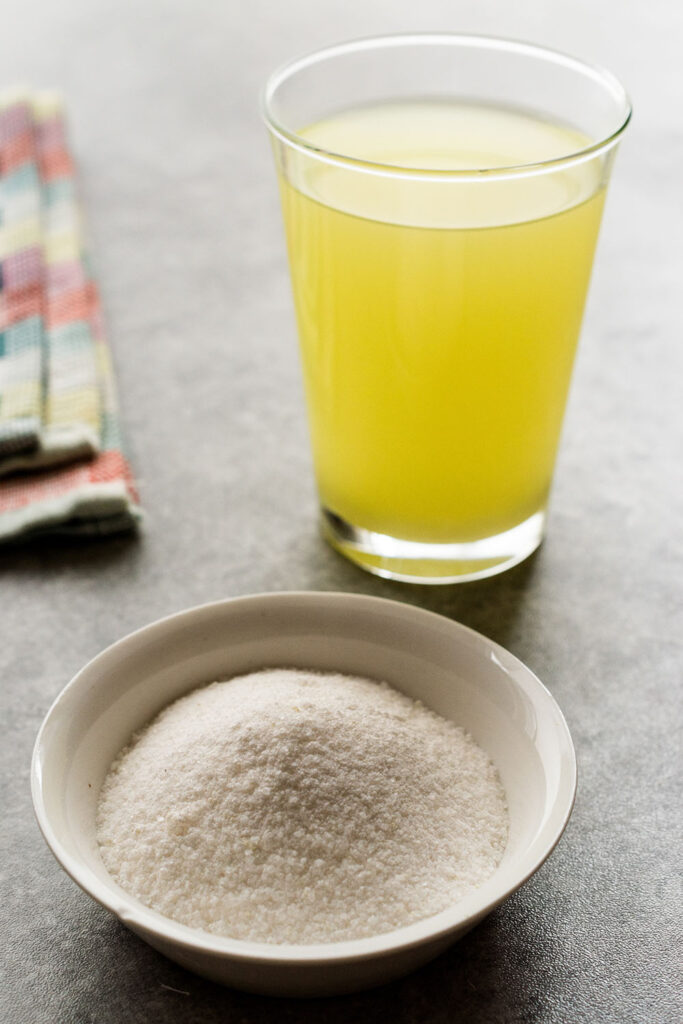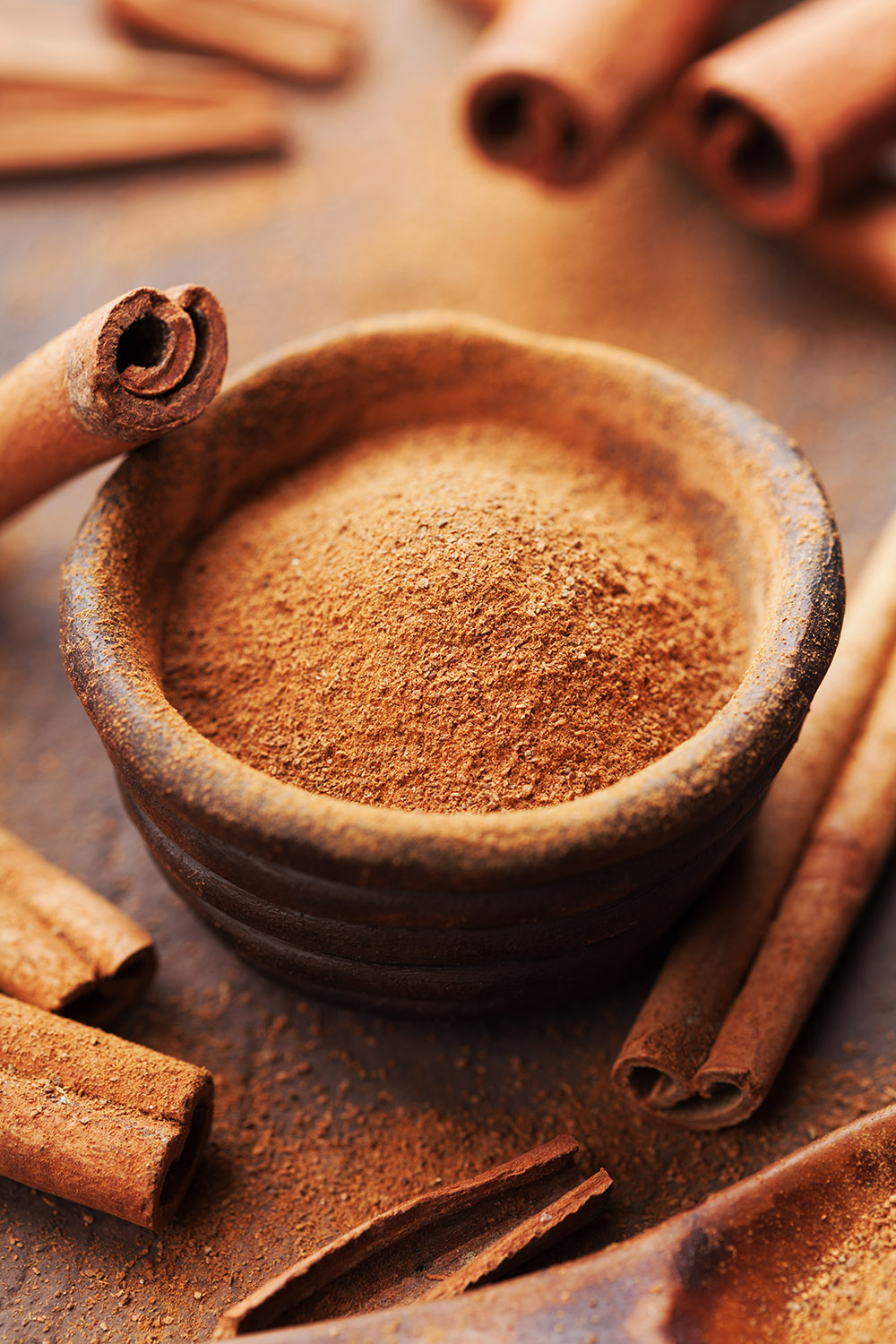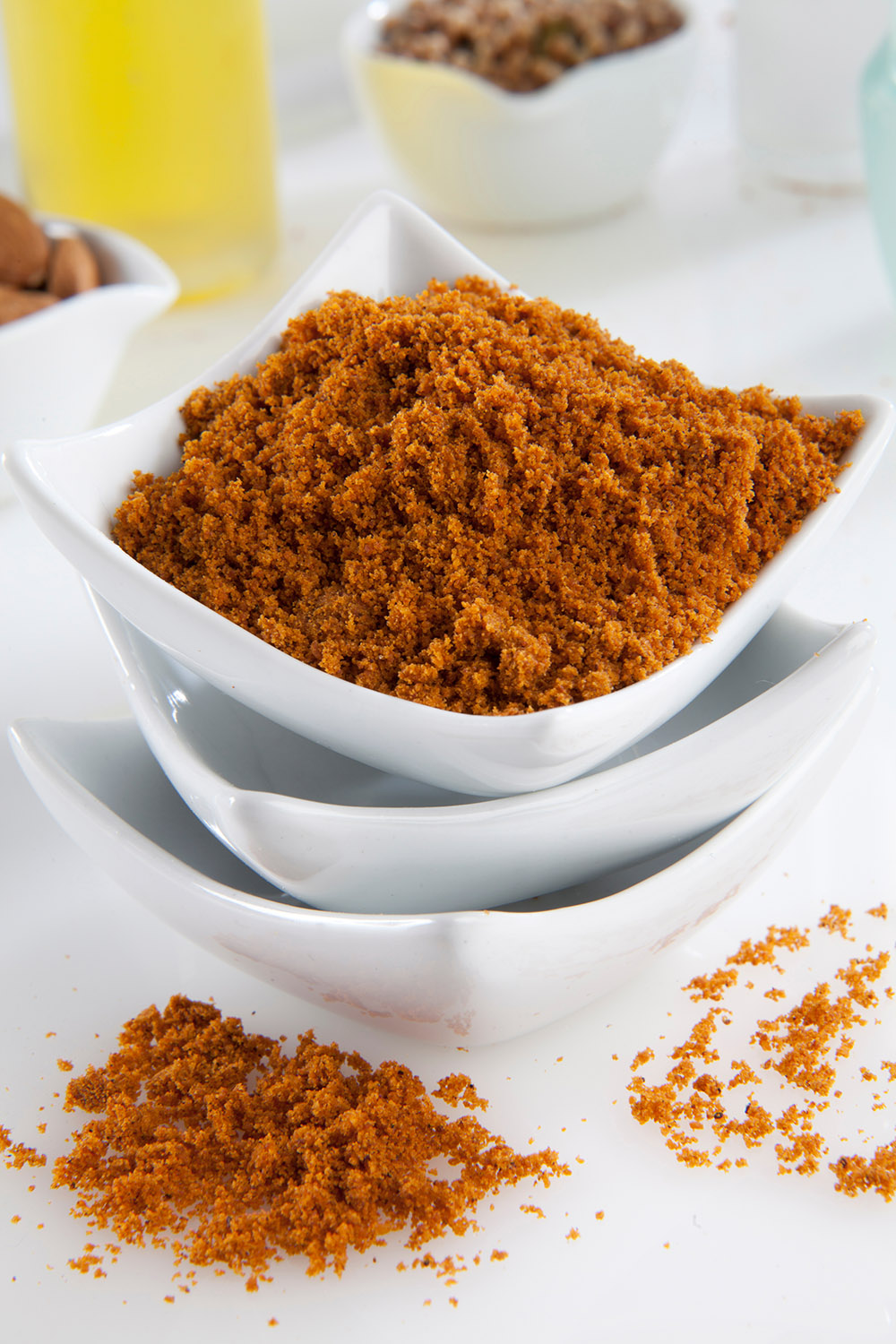Orange zest may seem like a minor addition to your baking recipe, but don’t be fooled. Just a sprinkle of it can elevate the entire flavor profile. With its refreshing citrusy and tangy note, nothing quite matches the distinctive aroma and flavor it imparts.

Saying so doesn’t mean you have to leave it out when running out of orange zest. Continue reading to explore 20 substitutions for orange zest that can save the day!
In This Article:
What Is Orange Zest?
Looking at the orange skin, you can easily see its zest—the aromatic, flavorful layer on top. Since it contains essential oil, it’s bursting with a bright, citrusy kick and refreshing fragrance that can spice up any baked goods. Indeed, its zesty, tangy edge is welcomed in many recipes. But orange zest’s role goes beyond just a flavor booster.
When permeating the batter, its pleasant acidity can tenderize the cake and balance the sweetness. Along with its vibrant twist, your sweet treats will surely make your mouth water and keep you coming back for more.
That’s not all; we bakers love sprinkling orange zest on top of some fruity baked goods to feast both the eyes and the taste buds. Just a little goes a long way!
20 Substitutes For The Zest Of Orange
1. Dried Orange Peel
Dried orange peel includes both the zest and the white part, so we can expect a stronger bitter note when using this ingredient. However, it still introduces a citrusy edge to your recipe, adding more depth to the flavor profile.
Due to its sharper taste, you will want to use half the amount when substituting it for orange zest. I notice that the peel often comes in large pieces, so it’s best to slice them into thin strips before topping them on your desserts or tossing them into the batter.
2. Candied Orange Zest
Ever tried candied orange zest before? If yes, you know why it appears on my list! Don’t let the name fool you, though; it’s actually not the zest but the entire outer peel that is simmered in sugar syrup. That’s why it will add a delightfully citrusy and somewhat sugary touch. The white part is still there, delivering a subtle hint of bitterness.
However, the sugar coat has masked most of its distinctive tang, so I recommend replacing 1 teaspoon of zest with 2 tablespoons of candied orange peel to achieve the same effect. You also need to adjust other sweeteners in your recipe.
3. Orange Extract
If you want to add an orange hint to your batter, orange extract is the way to go. While it isn’t the best for garnishing, it brings much-needed citrusy goodness to apple pies, orange cakes, carrot cakes, coffee cakes, and other sponge cakes.
Since this liquid is extracted from both the grind and flesh, it boasts an intense citrusy flavor, complemented by a touch of sweetness. That’s why you should cut back on its volume when swapping. My go-to ratio is ½ teaspoon of extract to 1 teaspoon of zest.
4. Orange Juice

Isn’t it weird to replace orange zest with juice? You might think. But hear me out; fresh orange juice delivers a similar tang with an additional fruity and sweet note. Though your baked goods might not receive the iconic zesty punch, the juice still brings a burst of flavor to the classic orange cakes, muffins, scones, and loaf cakes.
You can swap 2 tablespoons of orange juice for every teaspoon of orange zest. Don’t forget the moisture! Its liquid content can mess up your recipe’s wet–to–dry ratio, so remember to cut back on other wet ingredients.
5. Orange Syrup
Orange syrup is a wild card among orange zest alternatives, I must say. Sure, it packs a comparable citrusy, tangy flavor to orange zest, but I notice a chemically sugary taste. If you have some homemade syrup from fresh oranges, it will make a better stand-in.
Making it is a breeze by cooking the same amount of sugar and orange juice until it turns syrupy. Then, you can drizzle it on your baked goods or stir it in cake or muffin batter; 1 teaspoon of orange zest can be substituted by 1 tablespoon of this syrup.
6. Orange Marmalade
Orange marmalade, for me, is an upgraded version of the syrup with the presence of orange peel. The marmalade offers a complex flavor profile, beginning with a strong sweetness with a hint of tartness and finishing with a lingering bitter aftertaste—exactly what your baked goods may be missing.
Substitute 1 tablespoon of orange marmalade for each teaspoon of orange zest, and your treats will burst with flavor and aroma. It’s ready to serve out of the jar, like spreading on scones, muffins, and toast or blending in cake batter or cookie dough.
7. Orange Essential Oil
If you think essential oils are only for inhalation or massage, orange essential oil will surprise you with its wonderful uses in baking. Just ensure you get the proper type that is friendly for human consumption. If the recipe calls for orange zest, this oil, with its intense orange flavor, will stand in nicely.
Due to its pronounced tanginess and bitterness, I usually use only ¼ teaspoon of this oil for each teaspoon of orange zest. The orange essential oil will add moisture to the recipe, so you might want to reduce or skip other vegetable oils, if any.
8. Lemon Zest
Okay, that’s enough for oranges! Why not introduce an interesting twist to your baked treats with other citrus fruits? Apart from orange-based alternative options, lemon zest comes out on top as the most comparable to orange zest.
The tanginess, the citrus flavor, and the refreshing aroma, this replacement fills every gap the orange zest leaves behind. The best part? We can easily grab a lemon in almost any kitchen! It can make an excellent one-to-one substitute in any baking recipe.
9. Lemon Juice

If orange juice can work in a pinch, why can’t fresh lemon juice do the same? I love this juice even more because it doesn’t add sweetness to my recipe—no more adjustments are needed! Its refreshing citrus taste also breathes a summer vibe into my treats, taking the entire flavor to new heights.
You can use 1 tablespoon of fresh lemon juice for every teaspoon of orange zest. Here’s the catch: while 1 tablespoon of juice won’t be a huge deal in a large batch, you will want to adjust the wet ingredients a bit when only whipping up some cupcakes.
10. Lime Zest
Limes and lemons are, no doubt, siblings. I see no difference between their tastes, save for limes’ a bit more sour. These green citrus fruits’ zest also delivers a similar tangy flavor and bitterness to orange zest.
What really holds me back does not lie in the taste but the color. Those deep green strips can’t deliver the same visual appeal as vibrant orange or lemon zest does. Anyway, if you don’t mind this, simply swap it at a 1:1 ratio.
11. Lime Juice
Just like lemon juice, lime juice can work just fine as an alternative to orange zest. Several drops of this juice can fill your baked goods with a distinctively bright, limey taste. Note that it packs a stronger punch of tang than lemon juice. So, this replacement might not be for you if you are not a fan of that puckered-up flavor.
Start with as little as ½ tablespoon of lime juice and taste the batter to adjust it. After all, you can’t remove the tartness if it’s already there.
12. Clementine Zest
If clementines sound new to you, mandarins might ring a bell. These citrus fruits are a cross between mandarins and sweet oranges. This makes them a close relative to oranges, with a hint of that familiar citrus taste.
That’s why I recommend swapping orange zest with this citrus zest, though this replacement might throw in a touch sweeter and less tart flavor. However, this minor difference won’t hurt your baking recipe, so you can substitute it at a 1:1 ratio.
13. Grapefruit Zest
Another member of the citrus family, grapefruit zest, promises to bring a tang and zing akin to that of oranges. It can be substituted for orange zest at the same amount in baked goods, cutting through your bland treats with a refreshing citrus edge.
However, the grapefruit rind is much thicker than oranges’, so zesting them might require some elbow grease. Remember to use a larger microplane or grater to grate the zest.
14. Grapefruit Juice
Grapefruit juice might not be the best fit, but it can substitute for orange zest in a pinch. The characteristic tang of orange zest is now replaced by an intense tartness with a bitter-sweet hint of grapefruits.
Anyway, it still pairs well with the sweetness of sugar in your cake or muffin batter.
I usually use 1 ½ to 2 teaspoons of this juice for every teaspoon of orange zest, with some extra sugar in the recipe. Mark my words: extra sugar is key! You don’t want the tartness to overshadow the sweet note of the entire flavor profile, do you?
15. Pomelo Zest
How many of you think pomelos are the same as grapefruits? Well, pomelos boast a milder tang that leans towards the sweet side. So, you might not get the sharp citrus flavor similar to orange or grapefruit zest.
It still delivers a delightful floral note with a subtle citrusy aroma to your baked treats, though. Its sweetness is comparable to orange zest, so you can swap it at a 1:1 ratio.
16. Kumquat
Kumquats are favored flavor boosters in Southeast Asian households. Unlike other citrus relatives, these fruits introduce a distinct flavor profile, with the zest tasting even sweeter than the flesh. So, I usually combine its zest and juice for a burst of tangy-sweet flavor.
Coming in a small size, their outer layer is quite thin, so you can use the whole peel instead of zesting them. Substituting them for orange zest at the same amount is fine.
17. Yuzu
Here comes another Asia-rooted citrus fruit. Yuzu boasts a vibrant yellow peel that oozes a strong tart. So, its aromatic rind can replace orange zest both in flavor and visual appeal.
What I like most about its zest is that it retains all the tangy, citrusy essence even when cooked on high heat. That’s why it’s a perfect replacement in most baking recipes.
18. Pineapple
A tropical twist to your baked treats—why not? I know some bakers out there just hate the citrus flavor. Pineapple is a great stand-in that gives no hints of citrus; it’s just a wonderful sweet-tart addition.
Finely grating or chopping the pineapple can elevate its flavor. Use 1 teaspoon of greeted pineapple for each teaspoon of orange zest for a refreshing fruity kick.
19. Apple Cider Or Regular Vinegar

Apple cider or white vinegar should be a last resort because it lacks the citrusy taste. But at least it adds a sour note to the flavor profile.
To reduce the strong vinegary and tangy taste, use only ½ teaspoon of vinegar for each teaspoon of orange zest.
20. Skip It
Reading until this line, but can’t still get any sub on hand? No problem! Just leave it out, my friends! If orange zest is just a spice or a dressing in your recipe, its absence won’t break the deal. However, when you are whipping up orange-flavored baked goods, I bet you won’t want to skip this small yet mighty ingredient.
FAQs
Is Orange Peel The Same As Orange Zest?
No, the zest is the outermost part of the orange peel, which packs a citrusy punch. Meanwhile, the peel is the entire outer layer that covers the orange flesh. We won’t use the whole peel for baking since it will impart a bitter taste to our baked goods.
Where To Buy Orange Zest?
You can buy orange zest from most grocery stores around the town. Getting it online is also an option, but remember to search on trusted marketplace like Amazon or Walmart.
How To Make Orange Zest?
You can easily take the zest by pulling an orange across a grater, vegetable peeler, or microplane to get those zesty strips.
—
I hope these alternatives can save you a trip to the grocery store. Happy baking!
View More Our Common Ingredient Substitutions:
Cream and Cheese Substitutes:
- Sour Cream Substitutes
- Easy Crème Fraîche Substitutes
- Ricotta Cheese Substitutes
- Mascarpone Cheese Substitutes
- Heavy Cream Substitutes
- Eggs Substitutes
Baking Powder and Soda Substitutes:
Leavening Agents:







